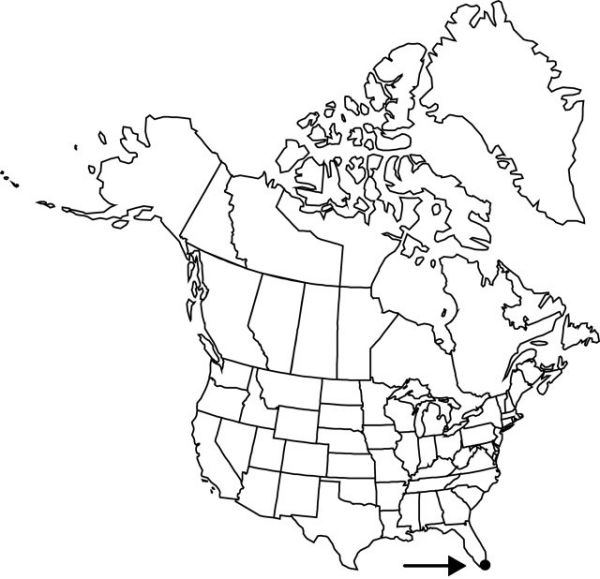Difference between revisions of "Pelexia adnata"
Syst. Veg. 3: 704. 1826.
FNA>Volume Importer |
FNA>Volume Importer |
||
| Line 15: | Line 15: | ||
|name=Neottia adnata | |name=Neottia adnata | ||
|authority=(Swartz) Swartz | |authority=(Swartz) Swartz | ||
| − | }}{{Treatment/ID/Synonym | + | }} {{Treatment/ID/Synonym |
|name=Spiranthes adnata | |name=Spiranthes adnata | ||
|authority=(Swartz) Bentham ex Fawcett | |authority=(Swartz) Bentham ex Fawcett | ||
| Line 34: | Line 34: | ||
|distribution=Fla.;Mexico;West Indies;Central America;n South America. | |distribution=Fla.;Mexico;West Indies;Central America;n South America. | ||
|discussion=<p>Phenology is based on observations in the Greater Antilles.</p><!-- | |discussion=<p>Phenology is based on observations in the Greater Antilles.</p><!-- | ||
| − | --><p>Plants of Pelexia adnata formerly found in a tropical hardwood hammock in Florida have not been seen recently and are probably extirpated (Edwin Bridges, pers. comm.).</p> | + | --><p>Plants of <i>Pelexia adnata</i> formerly found in a tropical hardwood hammock in Florida have not been seen recently and are probably extirpated (Edwin Bridges, pers. comm.).</p> |
|tables= | |tables= | ||
|references= | |references= | ||
| Line 58: | Line 58: | ||
|publication year=1826 | |publication year=1826 | ||
|special status= | |special status= | ||
| − | |source xml=https://jpend@bitbucket.org/aafc-mbb/fna-data-curation.git/src/ | + | |source xml=https://jpend@bitbucket.org/aafc-mbb/fna-data-curation.git/src/8f726806613d60c220dc4493de13607dd3150896/coarse_grained_fna_xml/V26/V26_1074.xml |
|subfamily=Orchidaceae subfam. Orchidoideae | |subfamily=Orchidaceae subfam. Orchidoideae | ||
|tribe=Orchidaceae tribe Cranichideae | |tribe=Orchidaceae tribe Cranichideae | ||
Revision as of 16:40, 18 September 2019
Plants cespitose, to 70 cm. Roots 3–8 mm diam. Leaves 2–7, erect; petiole 12–16.5 cm; blade elliptic to lanceolate, 7.5–14 × 3–5.5 cm, margins entire, apex acuminate. Inflorescences scapose racemes, pubescent; floral bracts linear-lanceolate, as long as flower or longer, apex acuminate. Flowers: dorsal sepal green, broadly ovate to elliptic, 5–6 × 3–4 mm, apex obtuse, pubescent; sepals gently recurved, narrowly elliptic, 5–6 × 1.5 mm, apex obtuse, pubescent; lateral sepals adnate to column foot forming spurlike mentum, mentum adnate to ovary, only partially free near tip, 6–7 mm; petals green, linear to linear-oblanceolate, 5 mm, apex obtuse, glabrous; lip white with yellowish throat, constricted at or distal to middle; apical half abruptly geniculate, fleshy, 5–6 mm, tip recurved, glabrous; column to 6 mm, column foot produced basally, decurrent along ovary, to 7 mm; viscidium ovate; pedicellate ovary erect-spreading, 10–11 mm, pubescent. Capules ellipsoid, 12–17 mm.
Phenology: Flowering Mar–May.
Habitat: Understory of moist, hardwood hammocks
Elevation: 0–20 m
Distribution

Fla., Mexico, West Indies, Central America, n South America.
Discussion
Phenology is based on observations in the Greater Antilles.
Plants of Pelexia adnata formerly found in a tropical hardwood hammock in Florida have not been seen recently and are probably extirpated (Edwin Bridges, pers. comm.).
Selected References
None.
